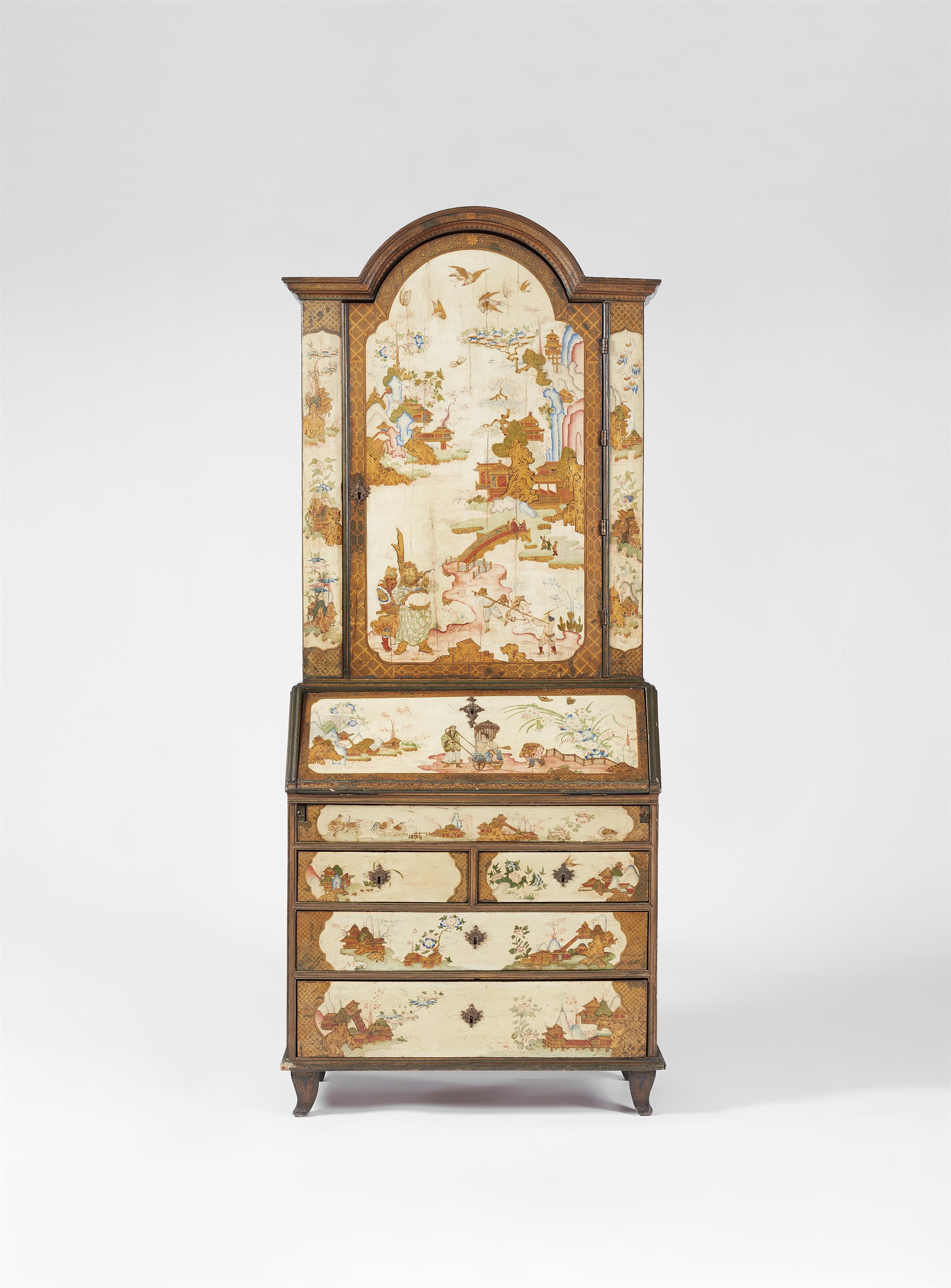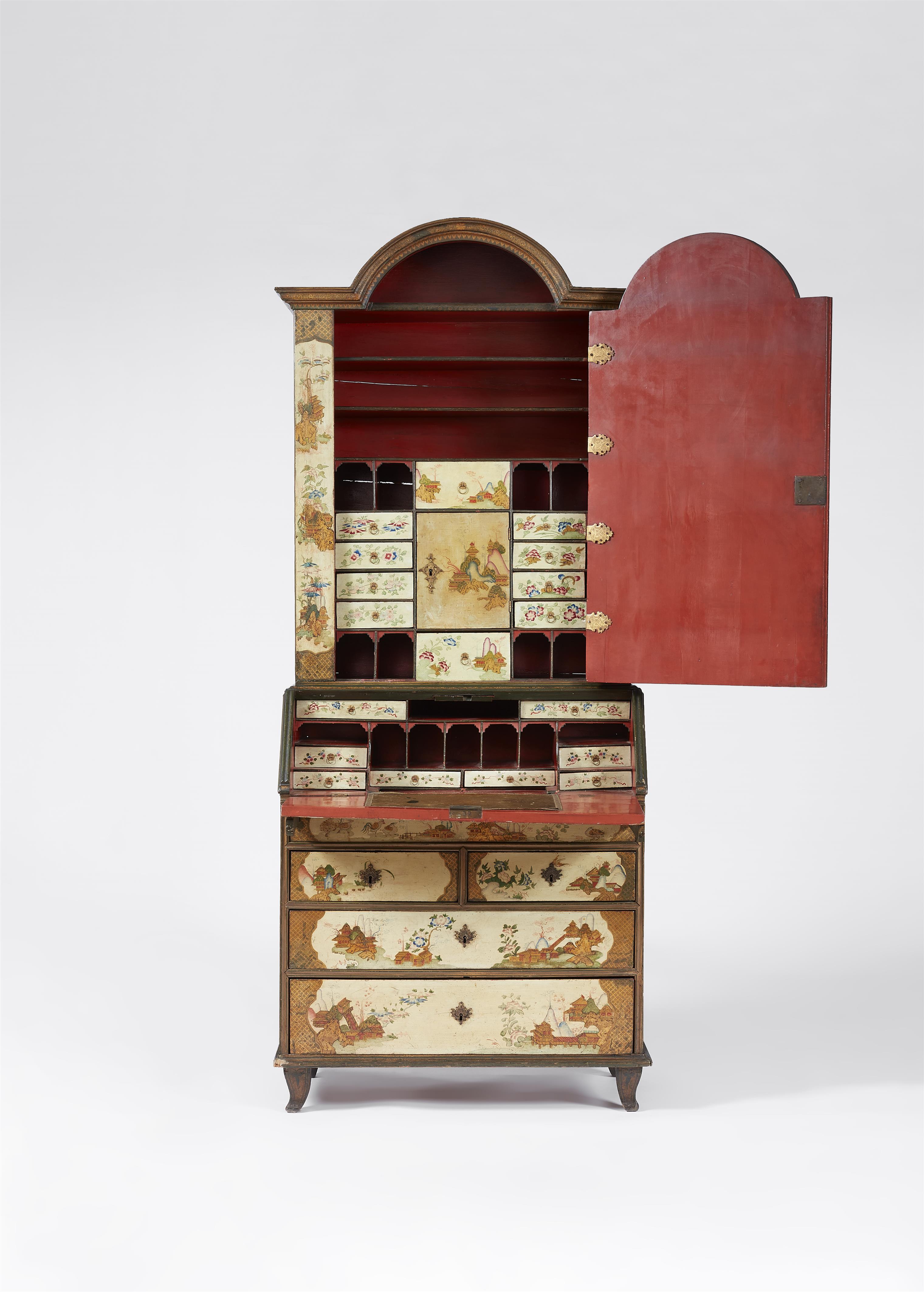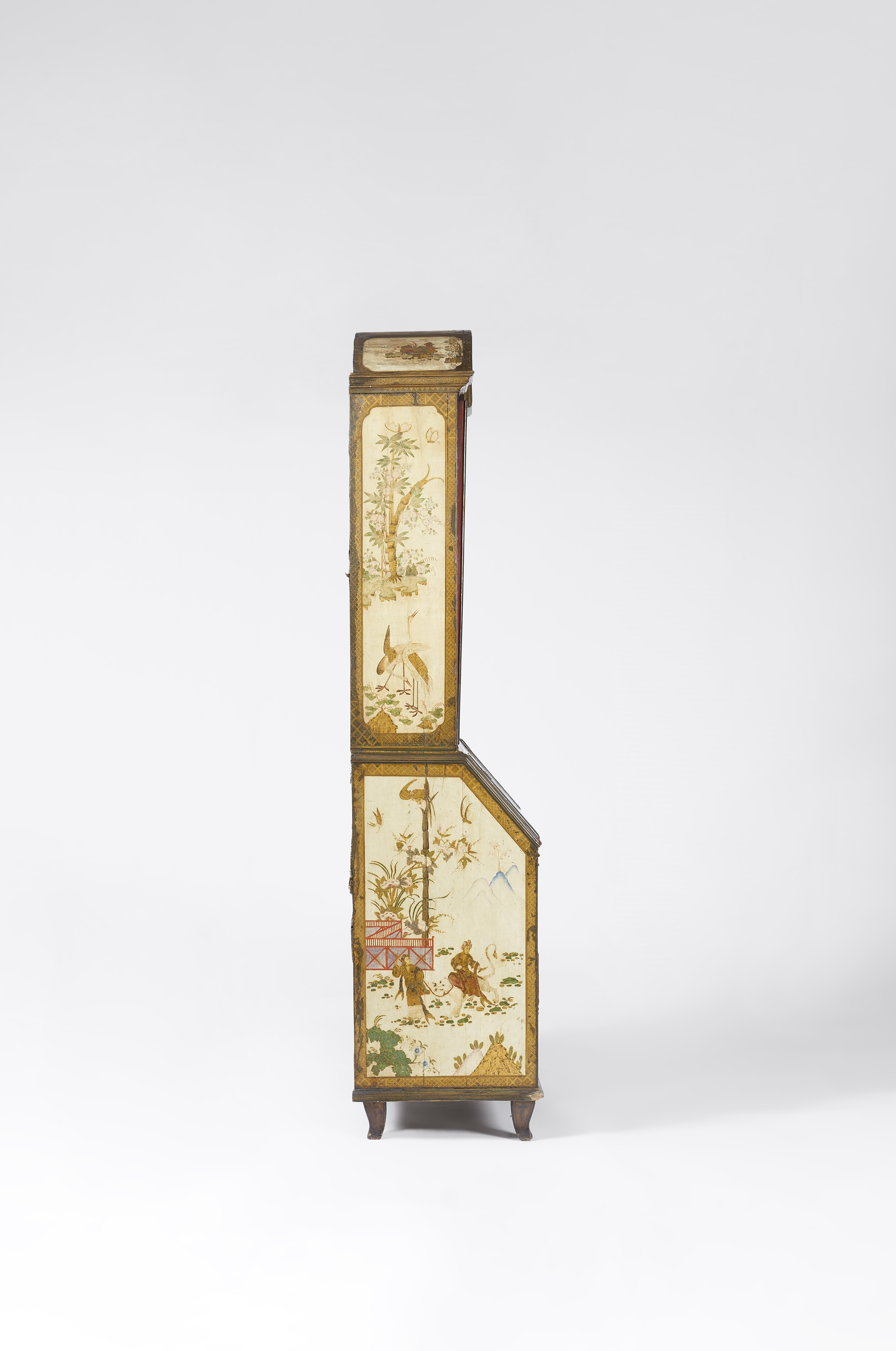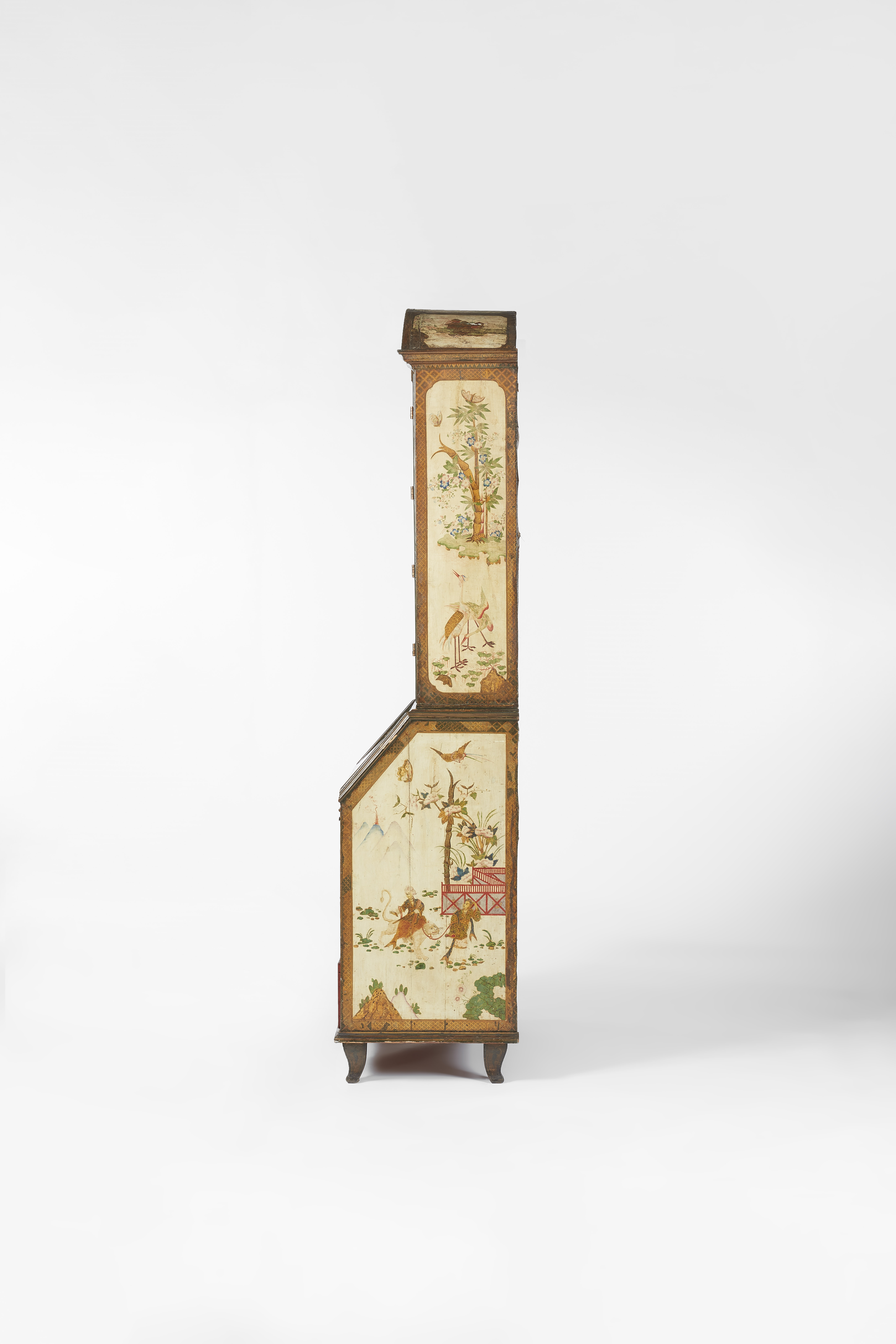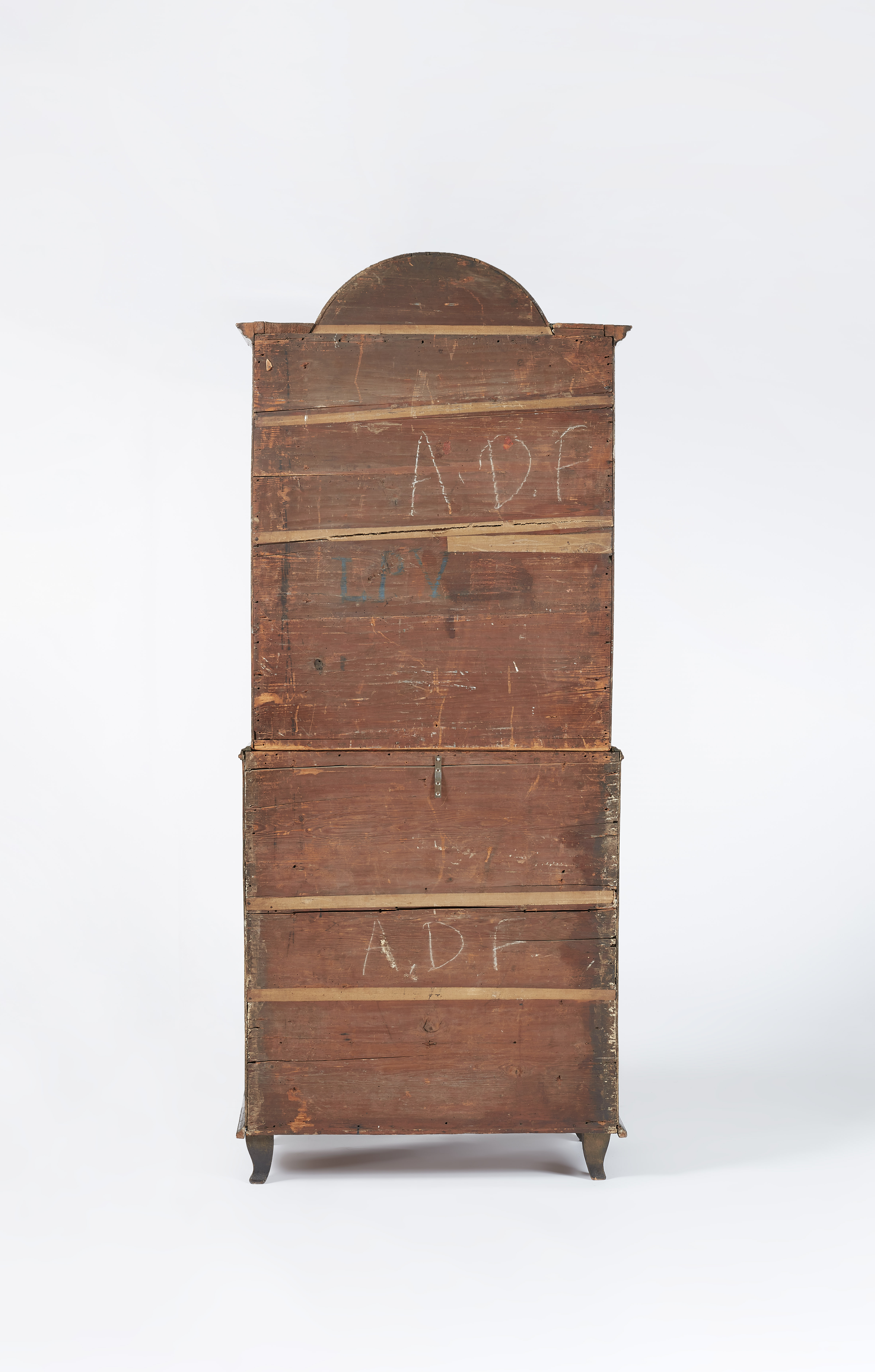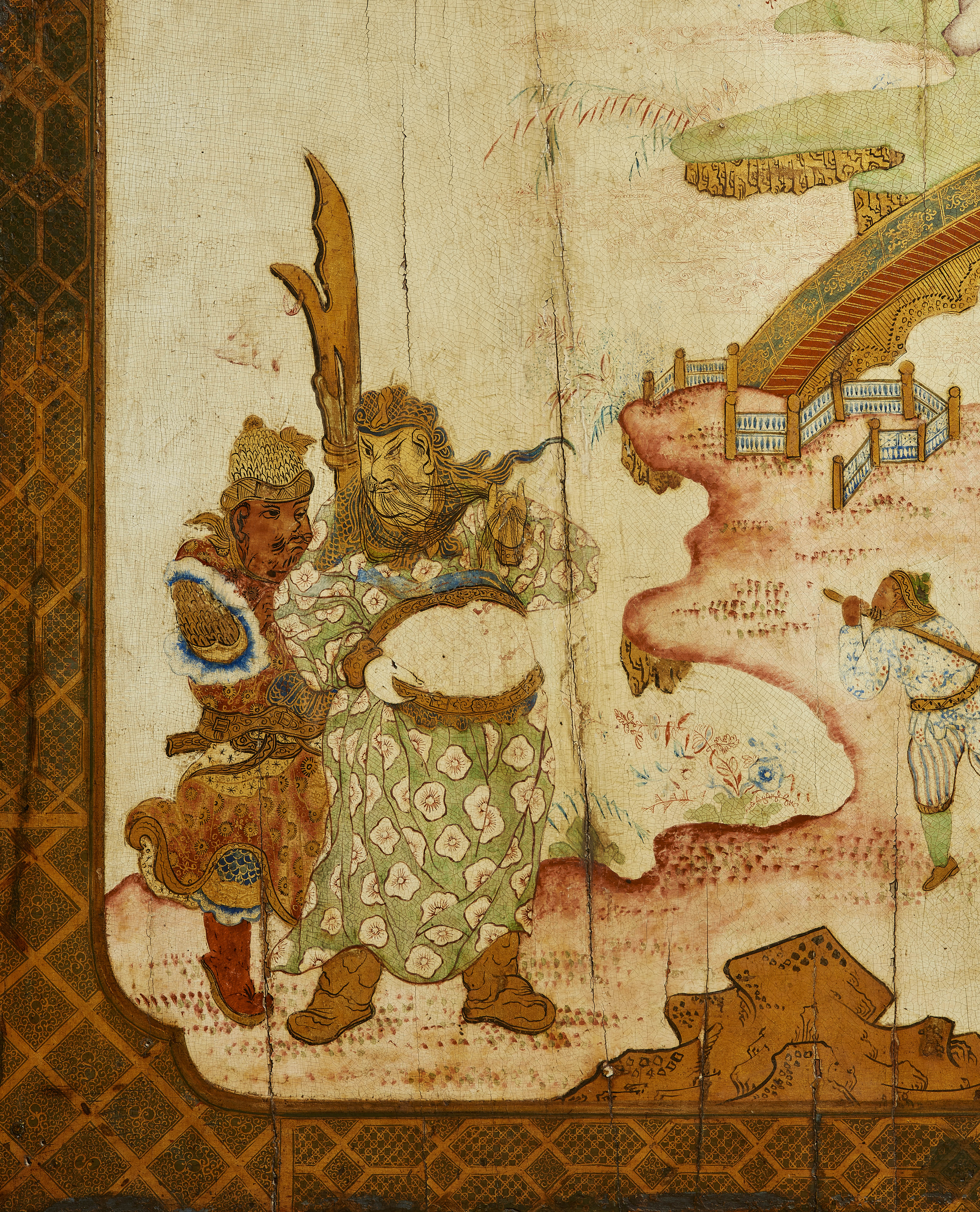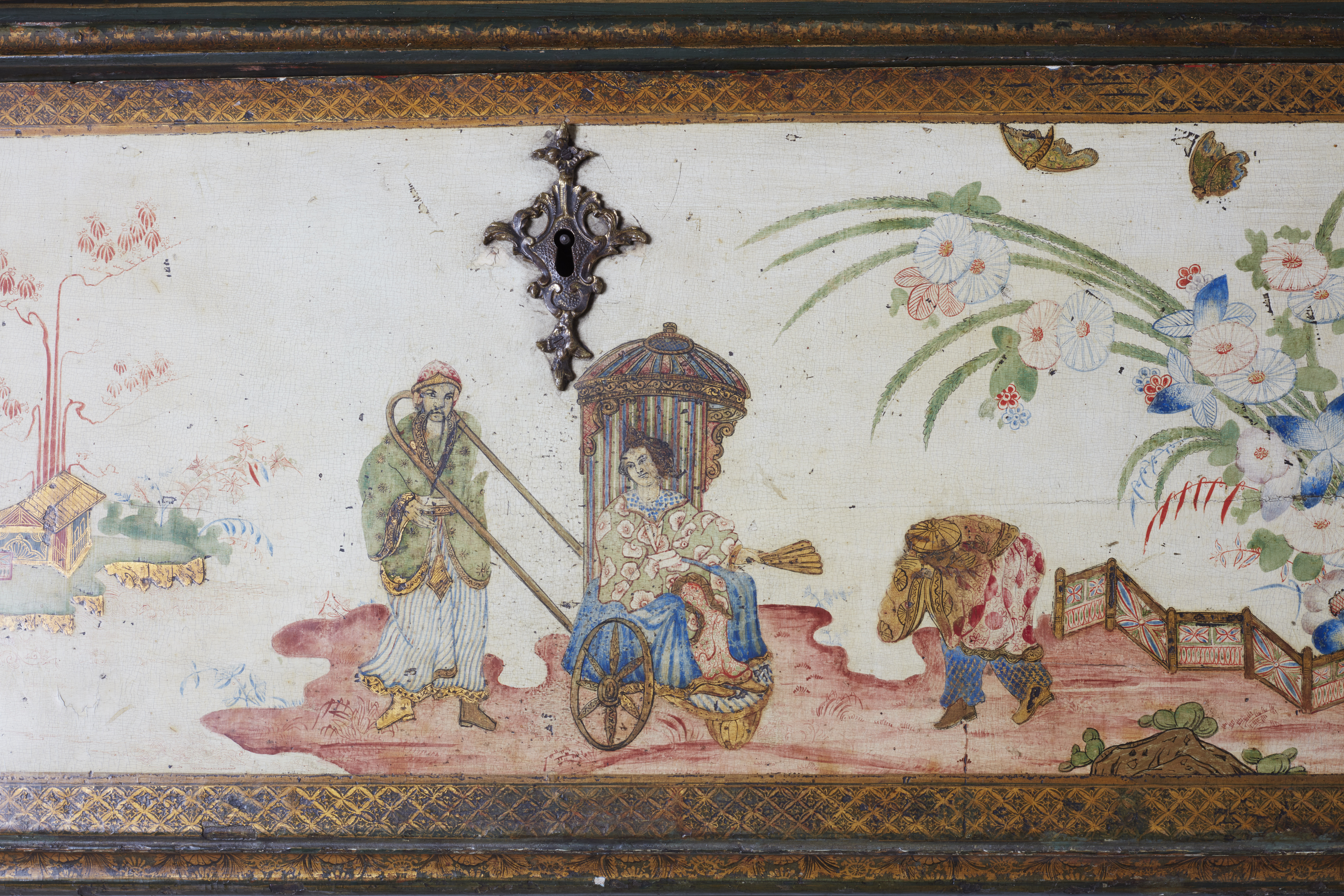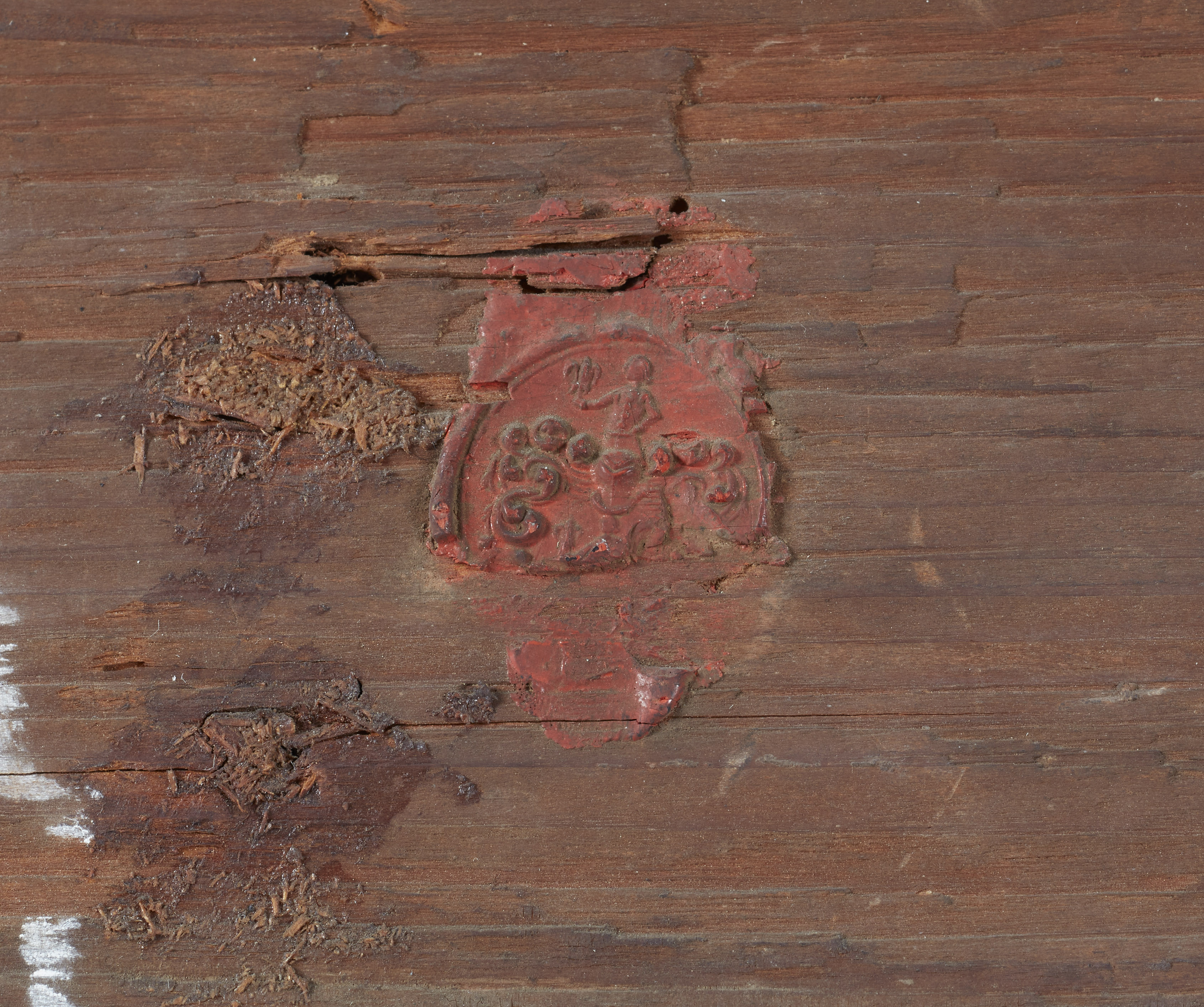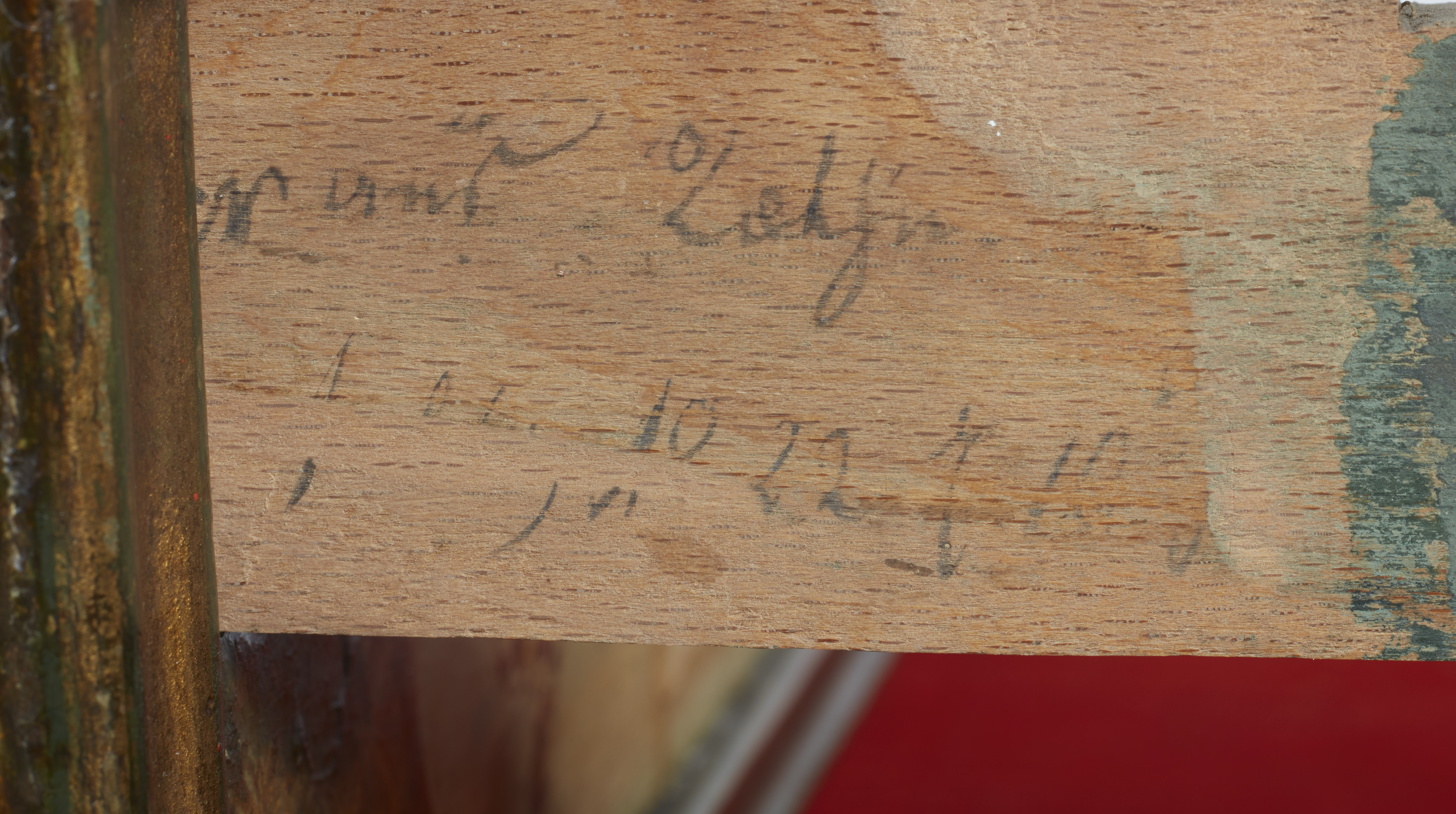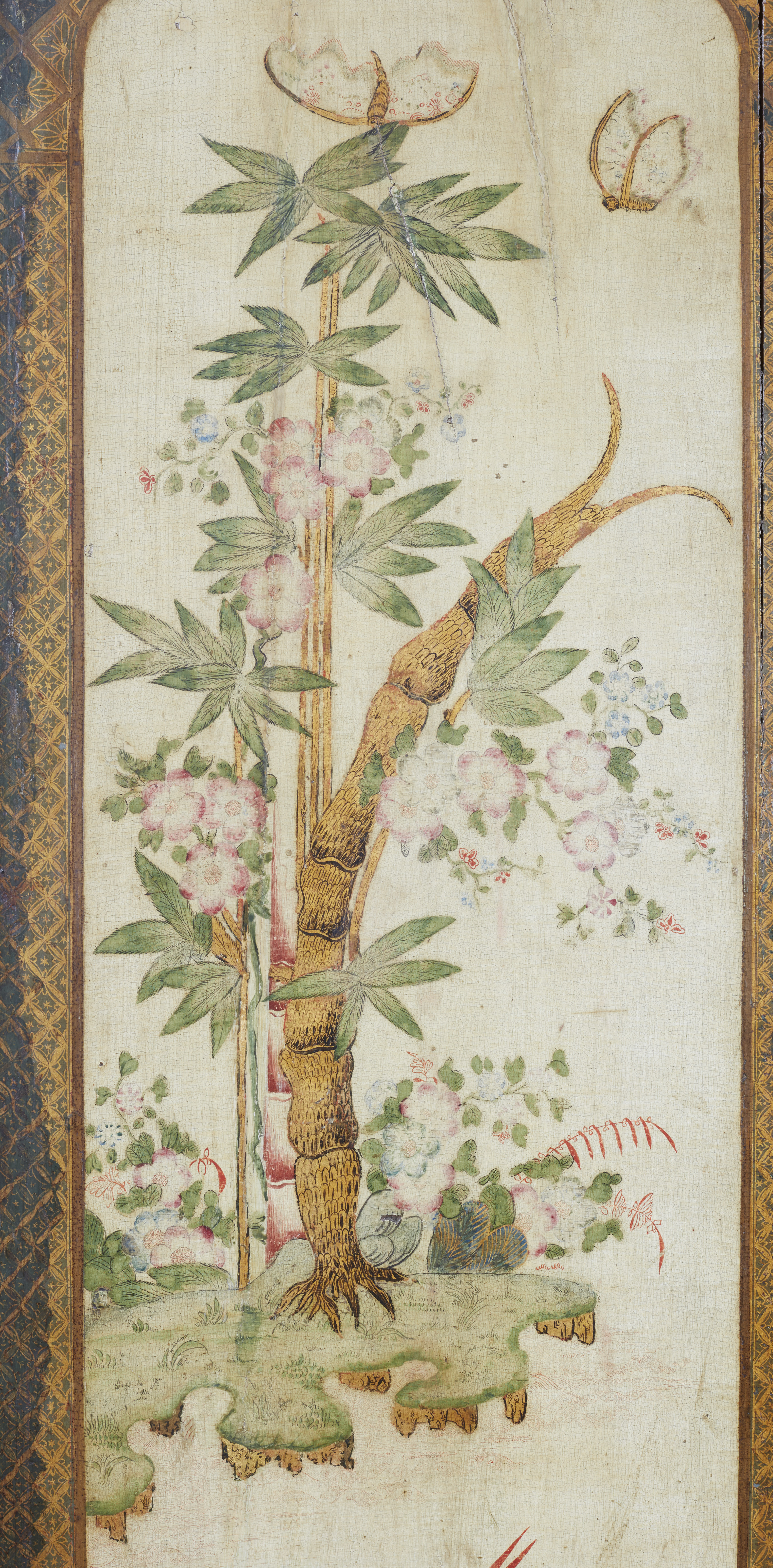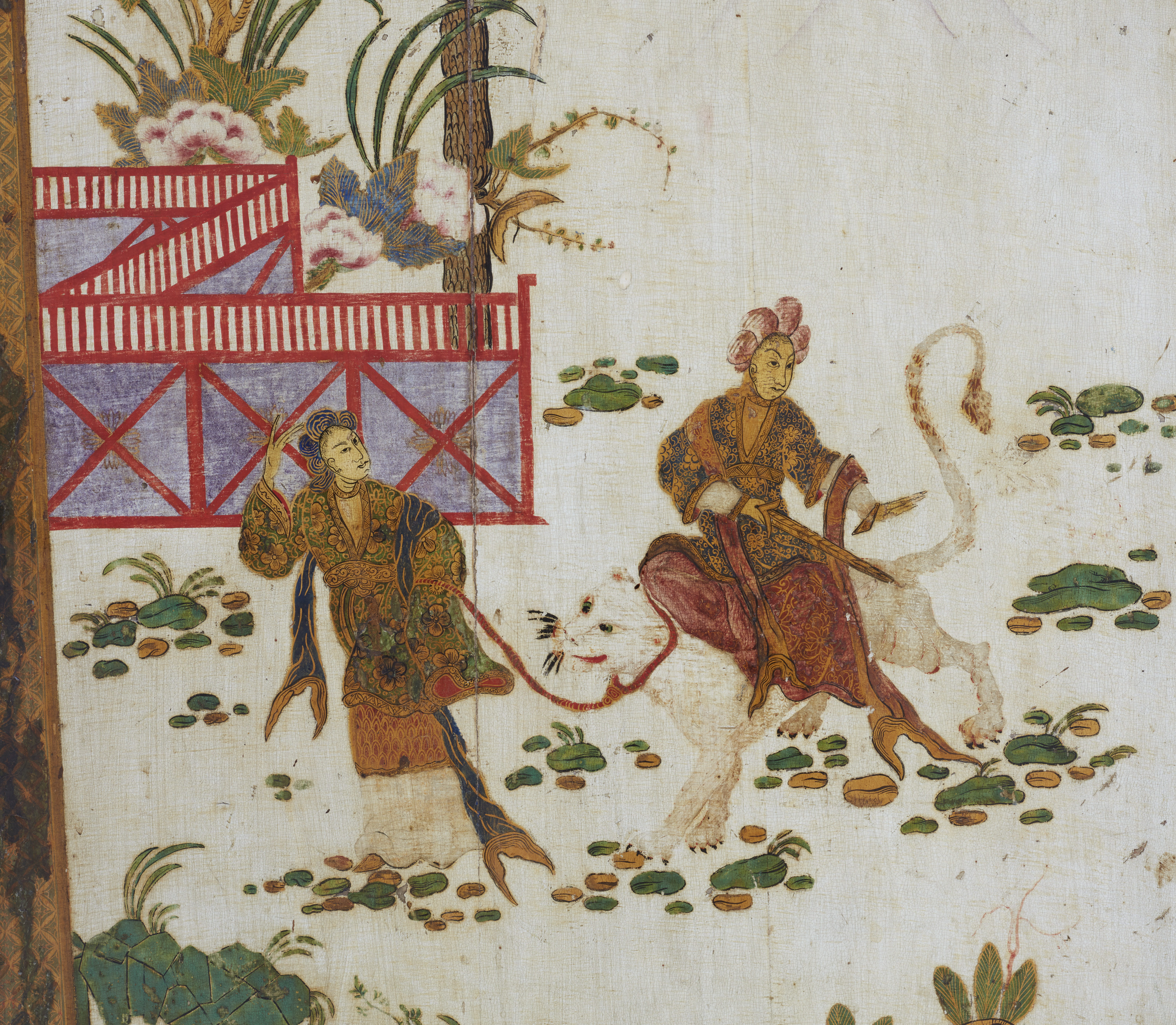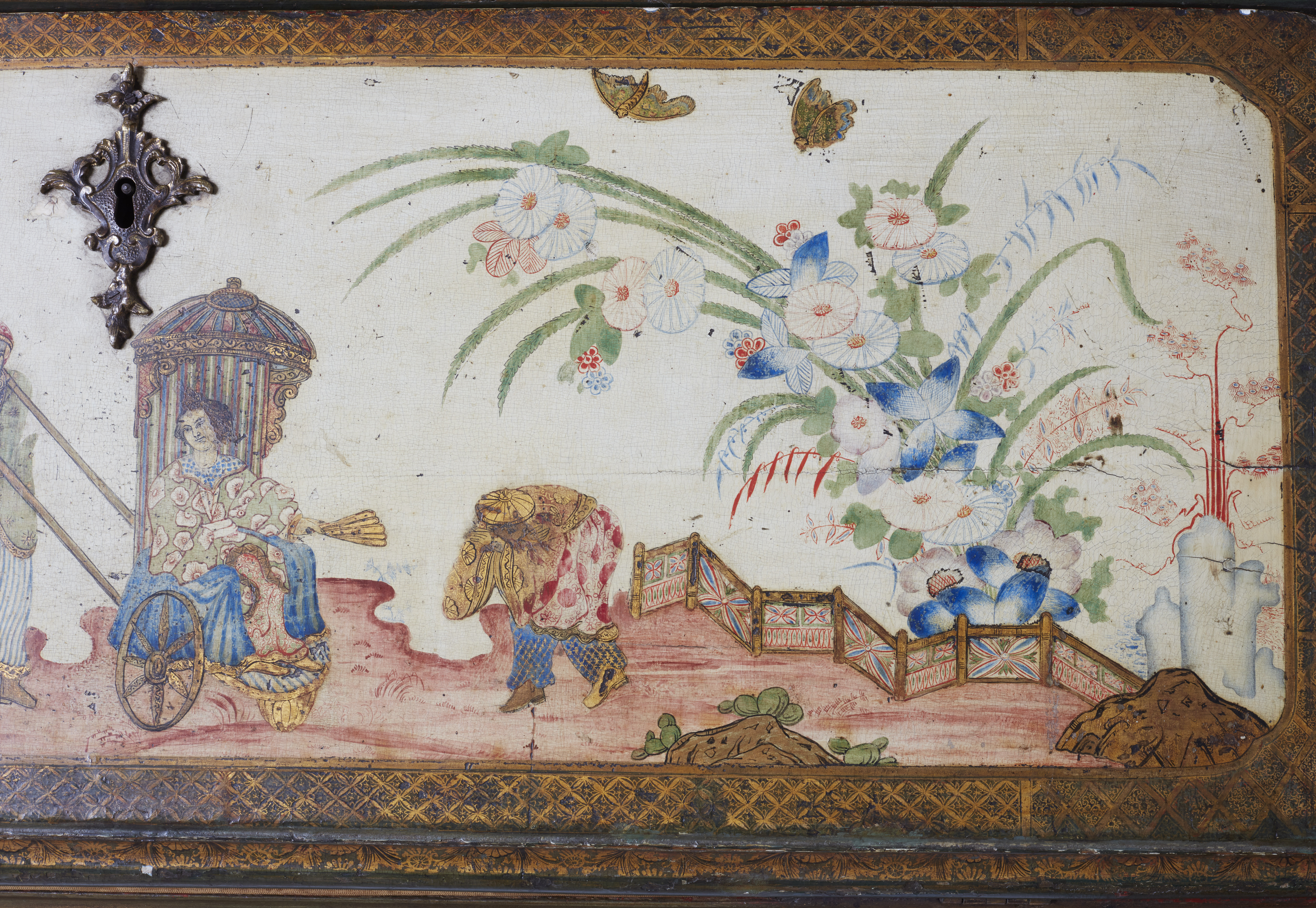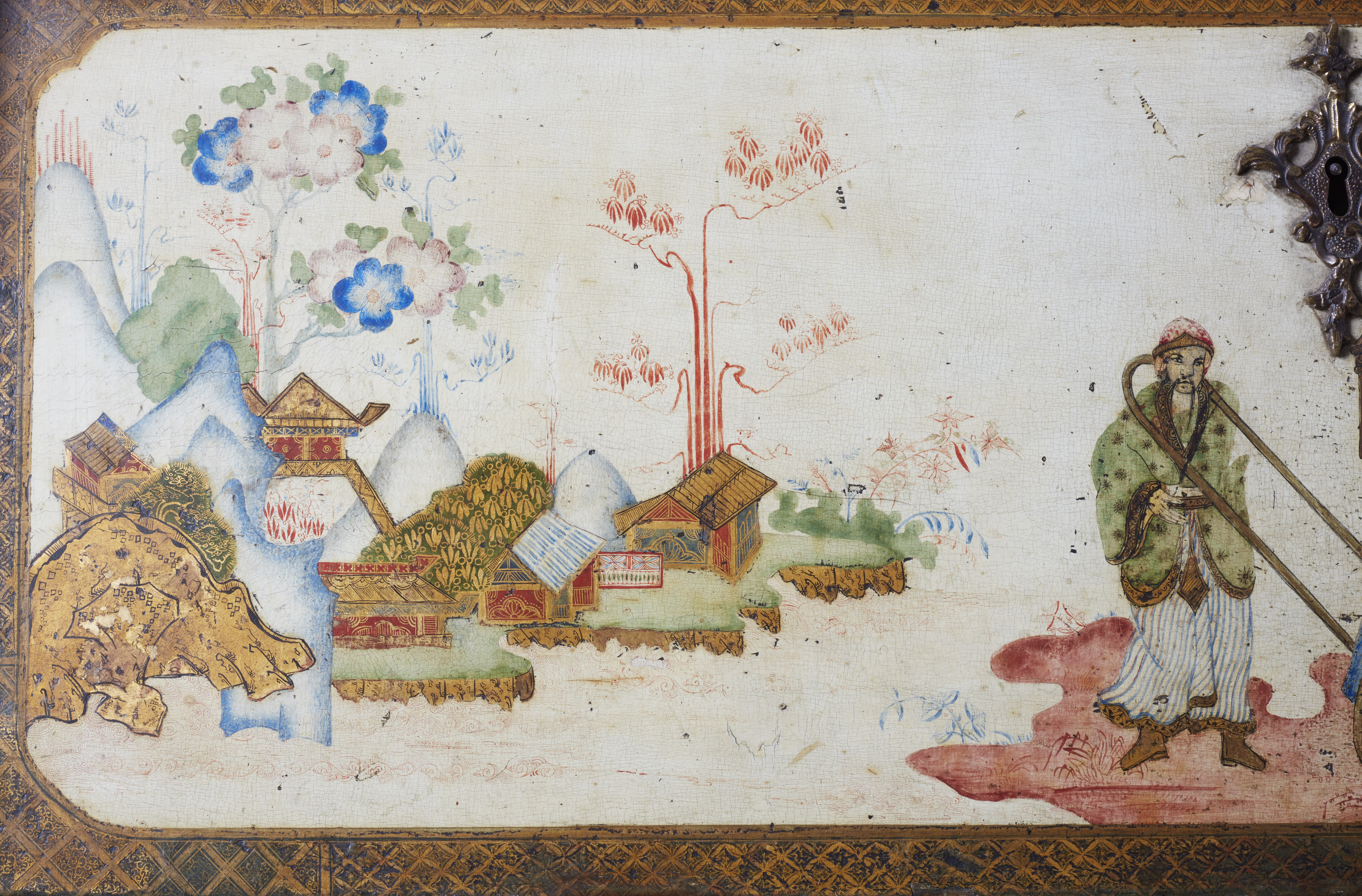An important Chinoiserie painted cabinet
Softwood painted in white and green and white and polychrome, with gilding and ormolu/brass mountings, later silk velvet. The four-drawered lower section beneath a sloped drop front writing surface concealing eight drawers and eight compartments. The single-doored upper section with ten drawers and twelve compartments. Richly decorated with Chinoiserie architecture, birds, tigers, bamboo and cranes on white ground. In very good, original condition with only minor localised retouches. The decor framed with textile elements. Remnants of a pencil signature on the back of the left support for the writing surface. With vertical shrinkage cracks, insect damage to the front left corner, one leg defective, one drawer pull ring lost. H 223, W 94, D 52 cm.
Dresden or Warsaw, attributed to Martin Schnell or his workshop, around 1717 - 30.
We only find similarly finely painted chinoiseries in the oeuvre of the Dresden lacquer painter Martin Schnell (c. 1675 - c. 1740). Very little is known about him and what we know today is thanks to the research work of Monika Kopplin and her Polish colleague Anna Kwiatkowska. Even the place of his birth, the Lower Saxon town of Stade, further down the Elbe from Desden, is not certain. The first record referring to him is dated 22nd January 1710, in which Martin Schnell is appointed "court acquisitor" in Dresden. Where he learned his trade is unknown, but by this time, 1710, he must already have mastered it to perfection. The Saxon Elector and Polish King August II had Chinese objects in his extensive and unique collections against which Martin Schnell's skills were measured. The products he demonstrated at court were therefore obviously convincing. From 1717 onwards, Martin Schnell was called upon to decorate the Japanese Palace, partly for wall-mounted, partly for mobile furnishings. This included all kinds of courtly furniture, also two part cabinets such as this. His gold and lacquer paintings were even used on Japanese blue and white pots - but were "washed clean and the laquirte removed from it" shortly afterwards by order of the king (Ströber, "La maladie de porcelaine..." Ostasiatisches Porzellan aus der Sammlung Augusts des Starken, Berlin 2001, no. 67). His designs for the Meissen porcelain manufactory, used on polished red Böttger stone ware, vases, jugs, and tea bowls, were more successful.
Around 1730 at the latest, Martin Schnell is known to have settled permanently in Warsaw, where he was commissioned to redesign Wilanów Castle. His breathtaking lacquer cabinet, probably completed by 1732, is one of the highlights of European lacquer art. The variety of exotic scenes depicted, the rich colours and the glimmering aventurine background still have a magical effect on all visitors today.
In the course of the preparation of the catalogue and the exhibition in 2005, research focused on a piece of furniture that is now in the Berlin Museum of Decorative Arts, the cabinet attributed to Martin Schnell and his workshop 1717 - 1721. This piece of furniture proves that Martin Schnell actually copied Chinese ink drawings quite accurately, which were probably made available to him from the royal collections. This is also confirmed on the piece presented here - the scenes go beyond the repertoire of "European" Chinoiseries that we know, for example, from prints by Petrus Schenk and Johann Christoph Weigel. The artist of this cabinet understood and mastered Chinese painting like no other European. All details are identifiable and precisely rendered, in a fluid masterly brushstroke.
Some of the figures are probably taken from the novel "The Story of the Three Kingdoms" by Luó Guànzhōng (羅貫中 / 罗贯, 1330 - 1400). One of the protagonists is Guan Yu 關羽 - military general from the Eastern Han who was later elevated to a deity and revered. The weapon with the crescent blade is the Green Dragon Crescent Blade (青龍偃月刀). This figure is depicted on the lower left of the door. The rickshaw motif on the sloping writing surface occurs several times in the Schultz Codex, the collection of master sheets from the Meissen manufactory, including on sheet 2, on sheet 14 and sheet 65. It goes back to an engraving by Arnoldus Montanus, "Denckwürdige Gesellschaft in den Vereinigten Niederländern an unterschiedliche Keyser von Japan", published in Amsterdam in 1669 (cat. Exotische Welten, fig. 7). The heron is similarly found in the lacquer cabinet in Wilanów Castle (Kopplin, op. cit., p. 208).
Provenance
Baron Edmond James de Rothschild (1845 - 1934).
French private ownership.
Literature
For this design cf. Haase, Dresdener Möbel des 18. Jahrhunderts, Leipzig 3/1993, cat. no. 75 f.
Cf. Kopplin/Kwiatkowska, Chinois. Dresdener Lackkunst in Schloß Wilanów, 2005, especially the cabinet now housed in the SMB Kunstgewerbemuseum Berlin, illus. 41.
An identical lockplate to that found in the inner drawer on a Munich chest of drawers in Klein/Krutisch, Schränke und Kommoden 1650 - 1800 im Germanischen Nationalmuseum. Bestandskatalog Teil 1, Ostfildern 2015, cat. 29, inv. no. HG 13155.
For the Schultz-Codex see cat. Exotische Welten. Der Schulz-Codex und das frühe Meissener Porzellan, Leipzig-München 2010, p. 71 ff.
For the decor cf. lacquer in Pillnitz Palace, inv. 46774, "4eckigter Aufsatz aus Türck. Façon".

